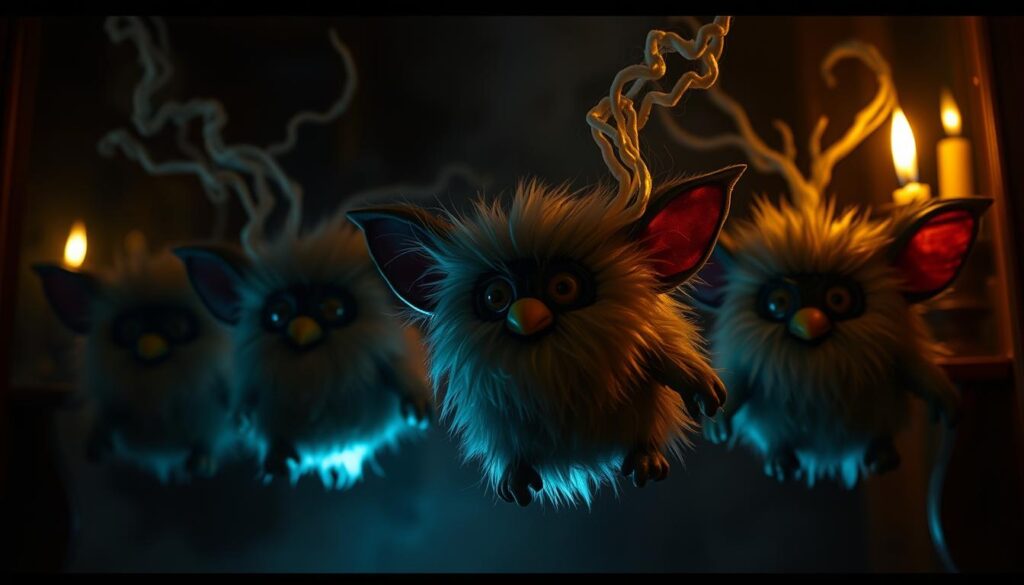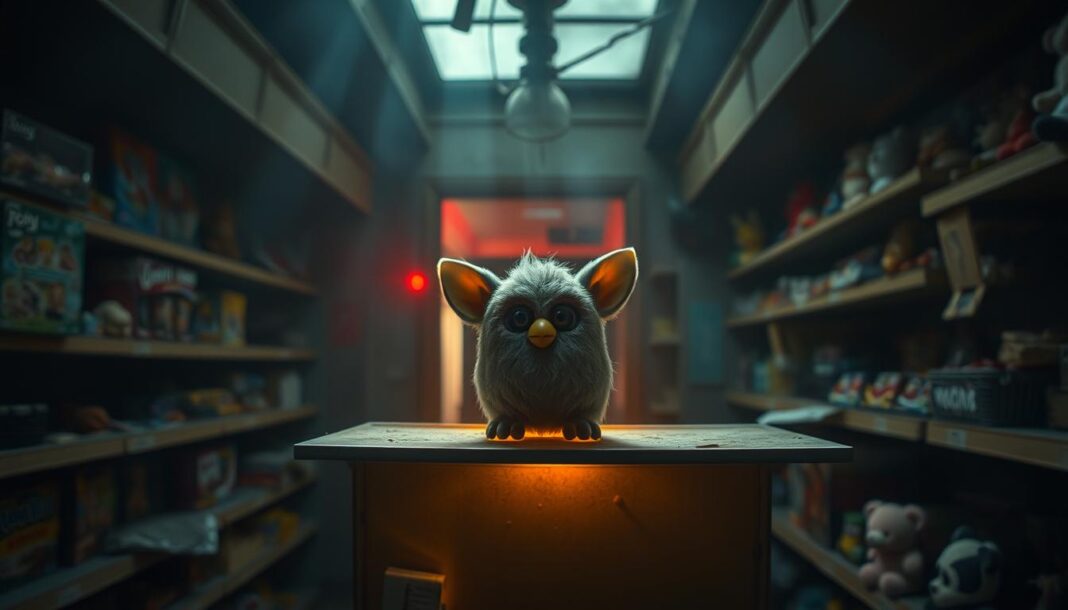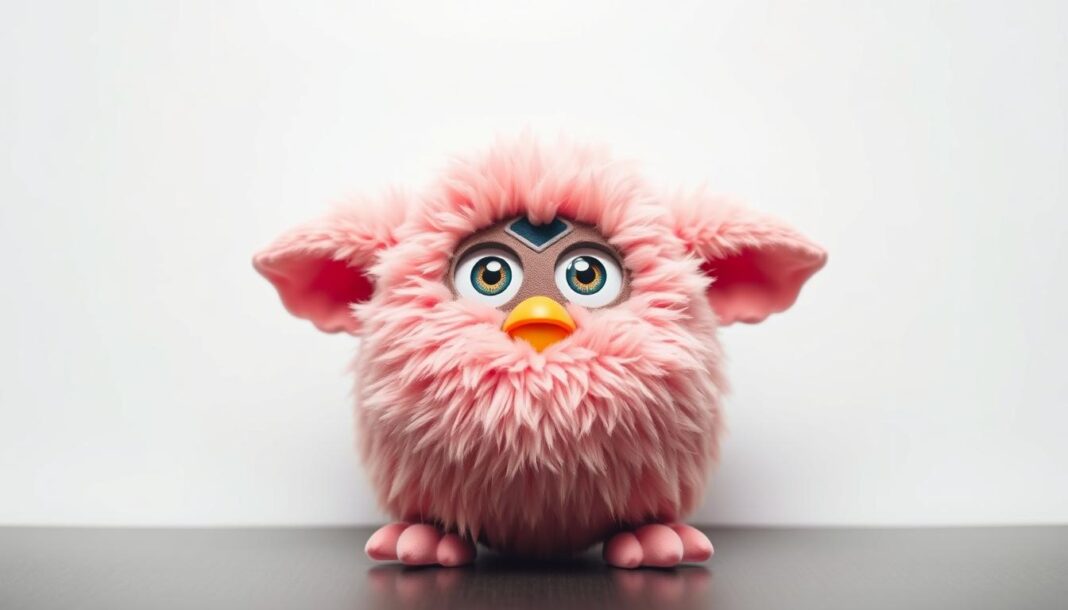For over two decades, Furbies have held a unique place in our hearts—and sometimes, our nightmares. These interactive toys, first introduced in 1998, have sold over 58 million units worldwide. Yet, their cuddly appearance often hides a darker side, sparking countless stories of unease and even fear.
From viral tales of Furbies whispering in the dark to their eerie design choices, these toys have become a cultural phenomenon. We’ll explore the psychology behind their creation, debunk paranormal claims, and uncover the truth behind the myths. Whether you’re a curious collector or a concerned parent, we’re here to guide you with expert insights.
Did you know Furbies share surprising connections to pop culture icons like Gizmo from Gremlins? Modern modifications have also kept them relevant in digital spaces, blending nostalgia with innovation. Let’s dive into the fascinating world of Furbies and separate fact from fiction. For more tips on managing these quirky toys, check out our guide on how to turn Furby off without any.
The Origins and Evolution of Furbies: From Cute to Creepy
Since their debut in 1998, Furbies have evolved from a simple toy to a cultural icon. These interactive toys quickly became a must-have, selling 15.8 million units in their first two years. Priced at $35, they were resold for hundreds during the holiday frenzy, making them one of the most sought-after things of the day.
![]()
The Rise of Furbies: A Toy Phenomenon
Furbies were revolutionary for their time. They used infrared communication to “talk” to each other, a feature that amazed both kids and adults. The 1999 Furby Babies introduced 24 colors, while the 2012 Party Rockers added LED eyes and multilingual capabilities. Over the years, these toys have remained a part of pop culture, even earning a spot in the Smithsonian as a culturally significant toy.
The Gremlins Connection: How Pop Culture Shaped Furbies’ Image
From the start, Furbies drew comparisons to Gizmo from Gremlins. Their small, fuzzy appearance and mysterious behavior fueled these parallels. The lore of “don’t get them wet” added to their mystique, blending cuteness with a hint of unease. This connection played a role in shaping how people viewed these toys.
From Adored to Feared: The Shift in Public Perception
While Furbies were initially adored, their popularity peaked in 1999, with 27 million units sold. However, stories of them acting on their own began to surface, leading to whispers of “possessed” toys. Sales declined, and Furbies became a niche collector’s item. Today, rare editions like the Bejeweled Furby can fetch up to $7,000, proving their lasting appeal. For more on their unique journey, explore the long Furby experience.
The Psychology Behind Furbies’ Creepy Design
Furbies’ unique design taps into deep psychological responses, creating a mix of charm and discomfort. Their appearance and behavior trigger reactions rooted in our evolutionary instincts and cognitive processes. Let’s explore why these toys have such a powerful effect on us.
Predatory Eyes: Why Furbies’ Gaze Unsettles Us
One of the most unsettling features of Furbies is their forward-facing eyes. This design mimics binocular vision, a trait common in predators. Our brains are wired to recognize this as a potential threat, triggering a primal sense of fear.
Interestingly, Furbies’ eye dilation also resembles cues seen in human infants. This combination of predator-like and infant-like features creates a conflicting emotional response. We feel both protective and wary, making these toys uniquely captivating.
The Uncanny Valley: Humanoid Features That Trigger Discomfort
Furbies fall into the “uncanny valley,” a concept studied by researchers at Carnegie Mellon. Their humanoid features—like expressive eyes and responsive movements—are close enough to human traits to feel familiar but not close enough to be comforting.
This dissonance is amplified by their ability to mimic human interaction. For example, modern Furbies can perform over 60 motions and produce 600 reactions, making them feel almost alive. This blurring of the line between toy and living being can be deeply unsettling.
Autonomous Interaction: The Illusion of a Mind
Furbies’ ability to “learn” and interact autonomously adds to their eerie appeal. Early models spoke Furbish, a fictional language, while later versions became fluent in English. This progression mimics the Theory of Mind, where we attribute thoughts and intentions to others.
Parents have reported removing batteries due to Furbies’ nighttime activity, fearing their unpredictable behavior. A MIT study found that children often anthropomorphize responsive toys, treating them like friends. This illusion of autonomy makes Furbies both fascinating and unnerving.
| Feature | 1998 Model | 2012 Model |
|---|---|---|
| Motions | 10 | 60+ |
| Reactions/Songs | 50 | 600+ |
| Language | Furbish | Multilingual |
From their predatory eyes to their uncanny humanoid features, Furbies’ design is a masterclass in psychological manipulation. Their blend of technology and charm continues to captivate and unsettle us, proving their lasting impact on pop culture.
Paranormal Claims: Are Furbies Really Haunted?
Over the years, Furbies have sparked countless tales of the paranormal, leaving many to wonder if they’re more than just toys. From eerie whispers in the dark to unexpected movements, these interactive companions have become the center of ghostly stories. But are these claims rooted in fact or fueled by imagination? Let’s explore the evidence.

Ghostly Behaviors: Tales of Furbies Acting on Their Own
One of the most common stories involves Furbies activating on their own, even without batteries. A viral Reddit post described a toy whispering “Feeeeed me” years after being stored away. While unsettling, this phenomenon can often be explained by capacitor power reserves, which store energy and release it later.
1999 models were particularly prone to sleep mode glitches, causing them to “wake up” unexpectedly. These behaviors, while spooky, are usually the result of technical quirks rather than supernatural forces.
Possessed Furbies: Urban Legends and Pop Culture
Urban legends have likened Furbies to haunted objects, drawing parallels to Annabelle, the infamous doll. Horror artists have even modified these toys using Arduino boards and Raspberry Pi to create “possessed” versions sold on Etsy. These customizations amplify their eerie reputation.
McDonald’s keychain Furbies from the 2000s also faced battery issues, leading to random activations. Such incidents have cemented their place in pop culture as mysterious and unpredictable.
Fact or Fiction? Debunking Paranormal Myths
Hasbro has officially stated that Furbies are not haunted. Most paranormal claims can be traced back to faulty IR sensors or capacitor malfunctions. Diagnosing these issues is often as simple as replacing batteries or resetting the toy.
While it’s tempting to believe in ghostly tales, the truth is far less sinister. For a deeper dive into separating fact from fiction, check out our guide on the cursed Furby.
Why Are Furbies So Creepy? The Science of Fear
The mix of advanced technology and human-like features makes Furbies both intriguing and unsettling. Their ability to mimic human interaction, combined with their unique design, taps into deep psychological responses. Let’s explore the science behind why these toys can evoke such strong reactions.
Triggering Primal Fear: The Fear of the Unknown
Furbies’ design often triggers primal fear, rooted in our evolutionary instincts. Their forward-facing eyes mimic binocular vision, a trait common in predators. This can make us feel uneasy, even if we know they’re just toys.
UCLA studies show that human brains are wired to respond to stimuli that resemble potential threats. Furbies’ unpredictable movements and sounds amplify this response, creating a sense of the unknown. This is why 40% of owners report sleep disruption from their nighttime activity.
Anthropomorphic Attachments: The Discomfort of A.I.
Furbies blur the line between technology and living beings. Their ability to “learn” and interact autonomously makes them feel almost alive. Children often anthropomorphize them, treating them like friends.
This attachment can be unsettling for parents. The 2012 model, with over 1,000 possible interactions, takes this to the next level. Its advanced features mimic human behavior, making it feel eerily lifelike.
Are Furbies Dangerous? Separating Fear from Reality
Despite their unsettling reputation, Furbies are not dangerous. Documented incidents show no harmful effects, and the FTC has taken action against scams exploiting their mystique. However, monitoring playtime is recommended for sensitive children.
Factory reset procedures can address glitches, ensuring they function as intended. For more insights into their design and safety, explore our guide on the original electronic companion.
| Feature | 1998 Model | 2012 Model |
|---|---|---|
| Interactions | 50 | 1,000+ |
| Language | Furbish | Multilingual |
| Safety Incidents | None | None |
From triggering primal fear to blurring the line between technology and life, Furbies’ design is a fascinating study in human psychology. While they may unsettle some, they remain a beloved part of pop culture.
Modern Myths and Viral Stories: Furbies in the Digital Age
In the digital age, Furbies have found new life through creative modifications and viral trends. From absurdist art to online communities, these iconic toys continue to captivate audiences. One standout trend is the “Long Furby,” a bizarre yet beloved creation that has sold hundreds of units on Etsy. These elongated versions, often customized with unique designs, showcase the playful side of modern art.
Online platforms like Tumblr and Discord have become hubs for enthusiasts sharing tips and stories. The #oddbody Furby community, active since 2018, highlights the creativity of fans. Meanwhile, TikTok’s #FurbyHorrorStories challenge has reignited interest in these quirky toys, blending nostalgia with humor.
Even museums have joined the trend, exhibiting modified Furbies as part of contemporary culture. For those looking to explore this fascinating world, check out our guide on Furby Boom to dive deeper into their enduring appeal.


